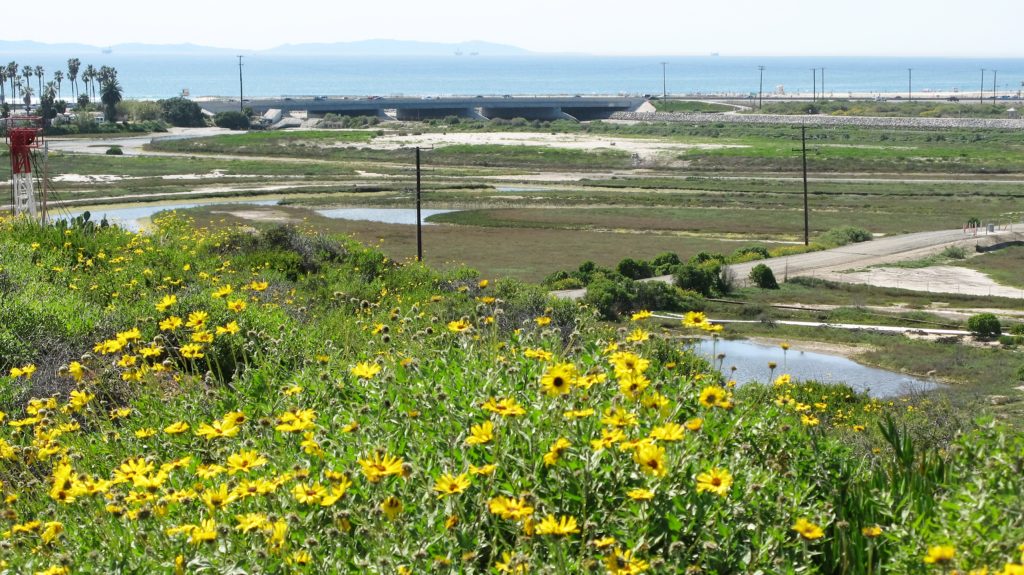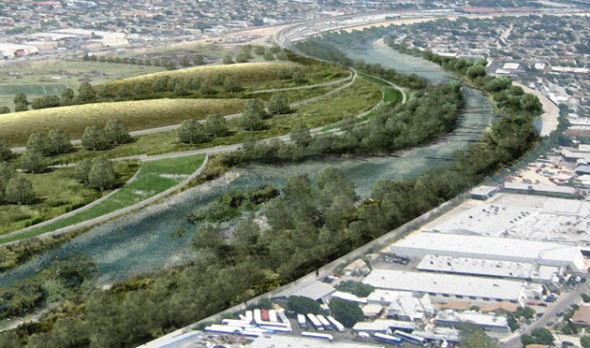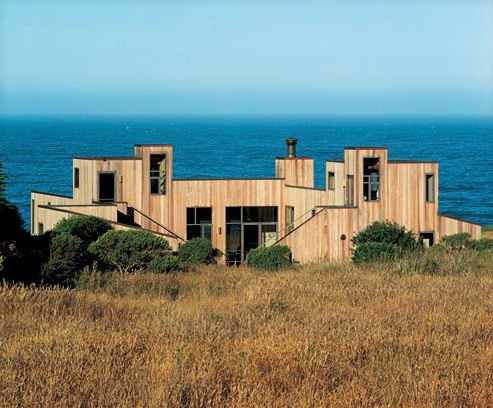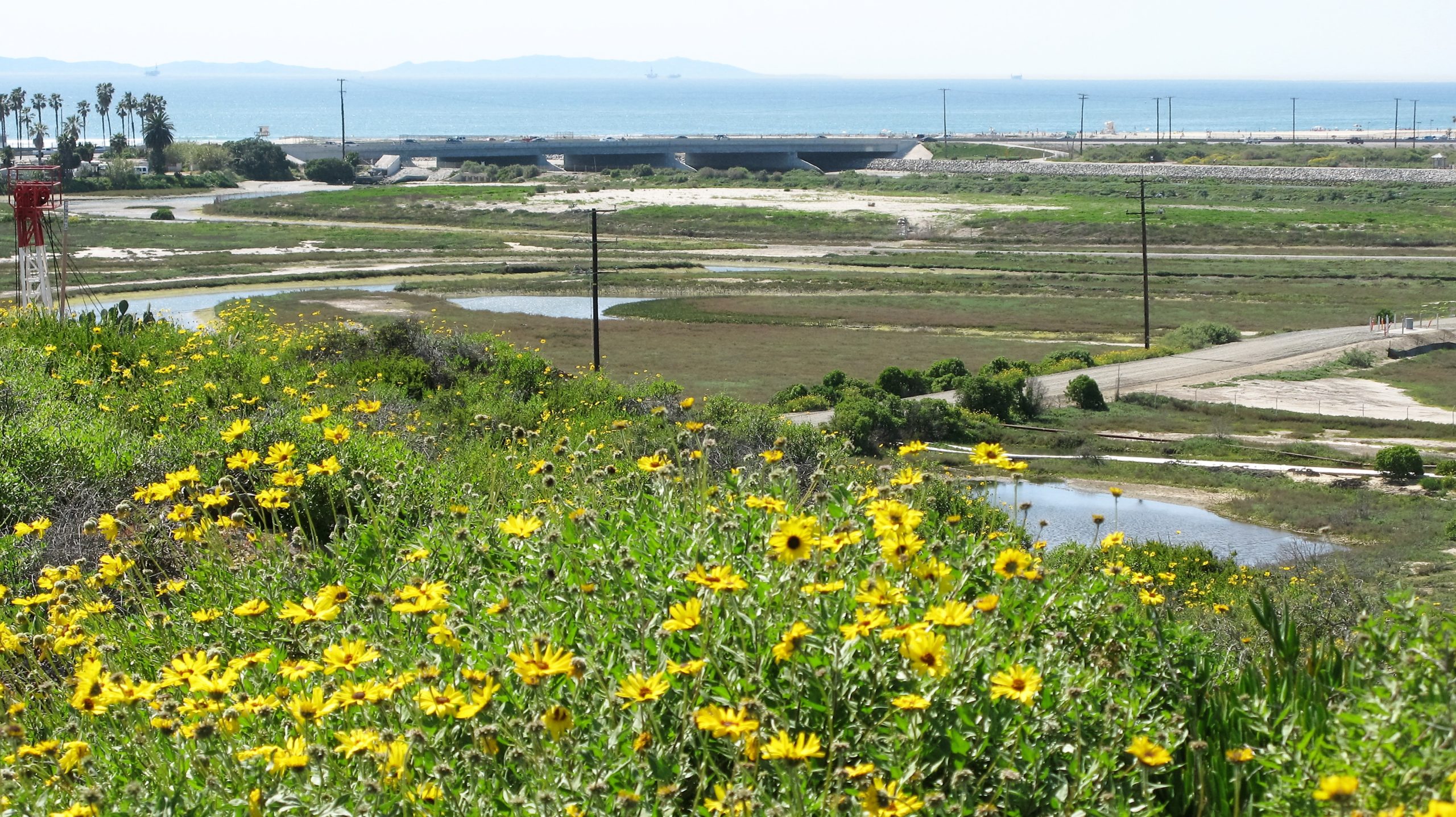The California Coastal Commission, after thirteen hours of testimony and deliberations, denied Newport Banning Ranch LLC (NBR) their bid to create a mega-resort and residential village on a present/former oilfield overgrown with state protected Environmentally Sensitive Habitat populated by rare or endangered wildlife. Next step would be devise a plan that would protect all of the designated environmentally sensitive habitat, and integrate a small-scale visitor-serving community on the remaining developable land using Regenerative Design.


Healing the Mistakes of the Past at Newport Beach’s Banning Ranch
In the recent history of California, our burgeoning dependence on fossil fuels and growth at any cost considered oil wells as a suitable way to cover bluffs and arroyos overlooking the Pacific in what is known today as Newport Beach. At the same time, our engineers and planners protected their most important real estate from flooding by channelizing the mercurial rivers, encasing in concrete the generator of life for the once dominant coastal sage scrub and Native American Nations such as the Tongva and Acjachemen.
Yet, more recently, luxury estate homes, ocean view condominiums and posh resorts have slowly colonized every last bluff and wetland in Southern California. This brings us to a Newport proposal by the oil companies and their subsidiaries (Newport Banning Ranch LLC or NBR) responsible for decades of blight and pollution on a former/present oilfield called Banning Ranch. This would include 895 homes, with two hotels and a slew of posh restaurants and shops, and of course 83 new oil wells just adjacent to the marshland areas they promise will be donated for use by birds, bees, and people.
Mind you, this 401 acres is the last privately owned coastal open space left on the South Coast.
Santa Ana River Delta/Estuary Revitalization: An Opportunity
Furthermore, Banning Ranch lies at the mouth of the channelized shadow of a 110-mile river, the Santa Ana, which drains a watershed that includes 3,200 square miles with 5 million inhabitants in three counties. The 401-acre site with a documented preeminent hydrologic, biologic and ecosystemic role is effectively the estuary/delta for this massive river, where silt and debris form wetlands where plants and animals thrive, where water is cleaned and the beaches and ocean are replenished and purified. Because of the flood control channelization of the Santa Ana River, this natural formation of a delta/estuary has been obliterated.
Have you noticed what’s happening to the Los Angeles River? Federal Army Corps, cities, community groups and land developers are moving fast on a $1.3 billion series of proposals through Northeast LA and Downtown, and more improvements are happening in the Valley and downriver all the way to Long Beach. Plans include breaking down the concrete and opening up the flow of water and silt to reinvigorate the ecosystem, and create open space and recreational areas, with complementary development plans underway.


Orange County and NBR must take note: Any proposal for development of this land must include a cogent plan for rehabilitation and restoration of the ecologic services inherent in such a keystone parcel of land.
Using Regenerative Design to Create Again Rather Than Destroy
The question remains, when do we begin to learn from our past mistakes (greenhouse gas caused climate change, destructive sprawl, endangered species extinctions, water shortages, oil contamination of water and air), and build a more functional, sustainable, and regenerative landscape?
Okay, Regenerative Design implies that human development can systematically work with nature to restore sensitive native habitat by understanding the site’s energy and water cycles. Using Regenerative principles, Banning Ranch constitutes an opportunity to not only preserve a portion of Coastal California landscape and a Native sacred site, but to actualize a development that works in partnership with nature and its many stakeholders, to encourage all species, humans included, to thrive. And rest assured, this is a for-profit idea that will continue to pay dividends for the developers, the community, and governmental entities involved.
The California Coastal Commission (CCC) rejected NBR’s proposal on September 7th in Newport Beach, following their staff report that stipulated they would only approve a development on about 19.7 acres of the 401, the only spaces on the site that aren’t covered with protected Environmentally Sensitive Habitat Area (ESHA). As the developer had no such plan, the project was rejected 9 to 1.
The controversy over this ESHA designation has caused a number of problems, leading to at least partly the firing of Charles Lester the CCC Executive Director. ESHA designation also inspired non-voting Commissioner Janelle Beland, Undersecretary of Jerry Brown’s Natural Resources Agency, to publicly denounce a biologist from the California Department of Fish and Wildlife (CDFW) for rendering an opinion in a memo about it. The latest from my Public Records Act investigation on this issue showed CDFW Senior Environmental Scientist Marilyn Fluharty following Ms. Beland’s lead, pushing against the advice of her superiors to shirk the agency mission to regulate development and protect fish and wildlife. According to activists in Laguna Beach, this is not the first instance of Ms. Fluharty seeming to work for the real estate development industry, rather than the wildlife of California.
The staff’s proposal for a more modest development — which commissioners can adopt or ignore — includes two northern clusters of housing consisting of 411 condominiums and 82 single-family homes. A proposed hotel, a road from Pacific Coast Highway and about 400 residences in the central and southern portions of the tract would be eliminated. — Bettina Boxall, LA Times
Yet all that implied or direct corruption has been overcome by an outpouring of media and activist attention to coastal issues this year, which has enabled the CCC staff to do their job. The designation of under 20 acres as developable land means that the present NBR plan, aiming to pave over 42 acres of ESHA, burrowing owl habitat, vernal pools, and coastal gnatcatcher territory, would violate the Coastal Act. Thus, finally, the Coastal Commissioners made the right call.


A Covenant with Nature Using Sonoma’s Sea Ranch Vision
Look, Newport Banning Ranch needs to get real about clean up and remediation of the land where necessary, while protecting the wildlife that thrived in between the oil rigs, pipes and eroded dirt paths. Twenty acres for a residential/resort development may not sound like much, but how about NBR consider the plan a 401-acre resort within a Nature Preserve and Estuary/Marshlands Revitalization Project?
Take a page out of the original vision of the Sea Ranch in Sonoma County. Proposed in the 1960s, the ensuing battle for coastal access gave rise to the legislation that formed the Coastal Commission. The creation sought to assimilate with the elements, rather than confront them, codifying a covenant with nature. Architect Charles Moore called the Sea Ranch his Mother Earth, and created the ground-breaking Condominium One. Obie Bowman designed the Walk-in Cabins, a remote gathering of Hobbit-like dwellings in a kingdom of redwoods. Landscape Architect Lawrence Halperin designed the master plan based on his experiences in a kibbutz, of open land held in common and homes sited in deference to nature.
A Regenerative Alternative Plan for Newport Banning Ranch
NBR could build homes at a medium density, three to four story buildings with parking one-half story underground. Hence, creating a focused sense of place in development areas that would maximize revenue, while ESHA could not only be protected, but restored and featured as an amenity to the development and community.
With regards to a hotel, though the Commission staff advised to remove hotel use from the plan, it could be accomplished with some sensitivity. Yet, why do we need this Bluff Road from Pacific Coast? Personal automobiles should be banned from the interior of the site, with parking at the edges. Thus residents could get around via Neighborhood Electric Vehicles and shuttle could ferry hotel guests to their blufftop accommodations. Hotels could be designed on stilts or on minimized footprints to protect ESHA and be ecologically designed like the Southern Ocean Lodge in Australia, or Tree Bones in Big Sur, where the architecture could serve as a framework for nature and guests to blend with.
Coastal Commission Decision
It’s interesting to note that biologist Robb Hamilton reminded me that many years ago legendary OC environmental activist Dr. Jan Vandersloot, who left us far too soon in 2009, predicted only 20 acres could be legally developed at Banning Ranch. It seems the Coastal Commission staff agrees.
Following the Coastal Commission’s rejection of the Applicant’s Revised Development proposal, NBR should take to heart the updated Staff’s recommendation that all ESHA be avoided and afforded a consistent, high standard of protection, regardless of the current condition of the ESHA. In so doing, the developer and the community should come together to collaboratively craft a new regenerative vision for the site that would protect and restore this endangered keystone coastal resource, while creating an innovative visitor-serving community. So, let’s get to work!
Jack Eidt is director of Wild Heritage Planners, editor of WilderUtopia.com. For an alternatives analysis he conducted with Architect Carl Welty and Landscape Planner Blake Whittington, CLICK HERE.
Updated 26 September 2018










Pingback: Wild Sonoma's 'Valley of the Moon' - Living with the Land | WilderUtopia.com